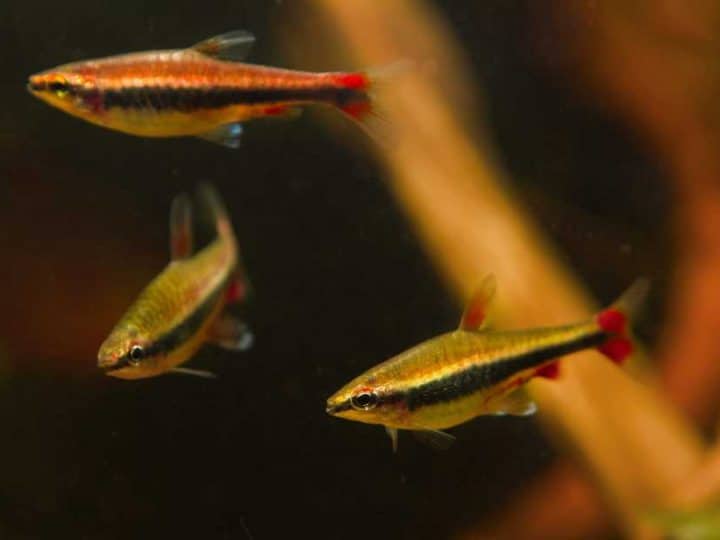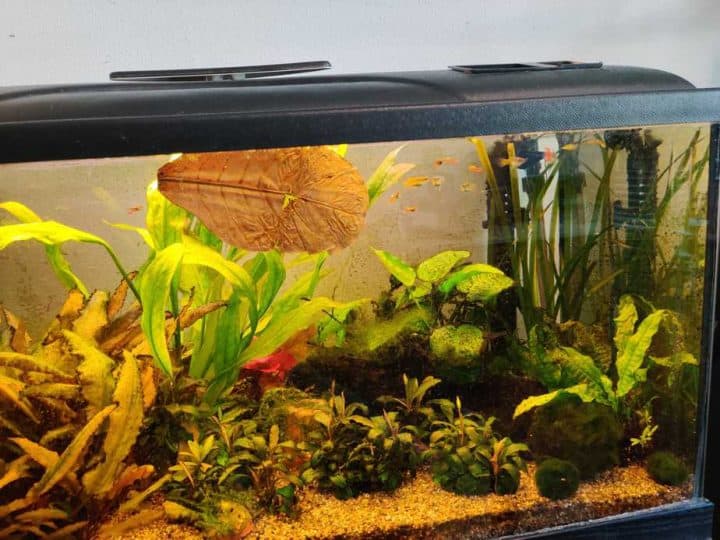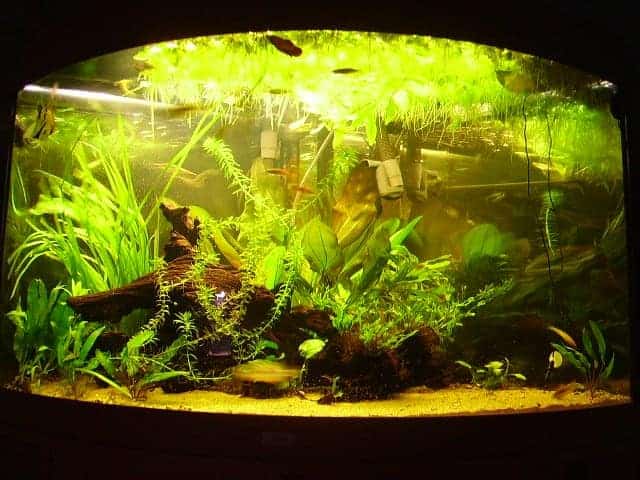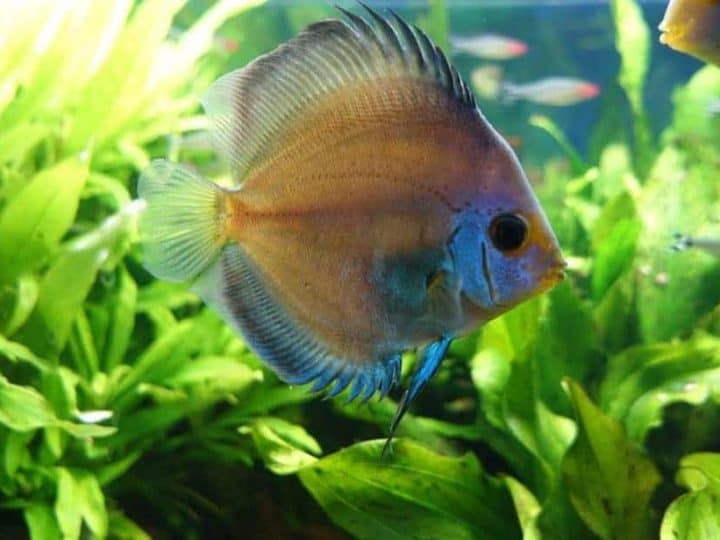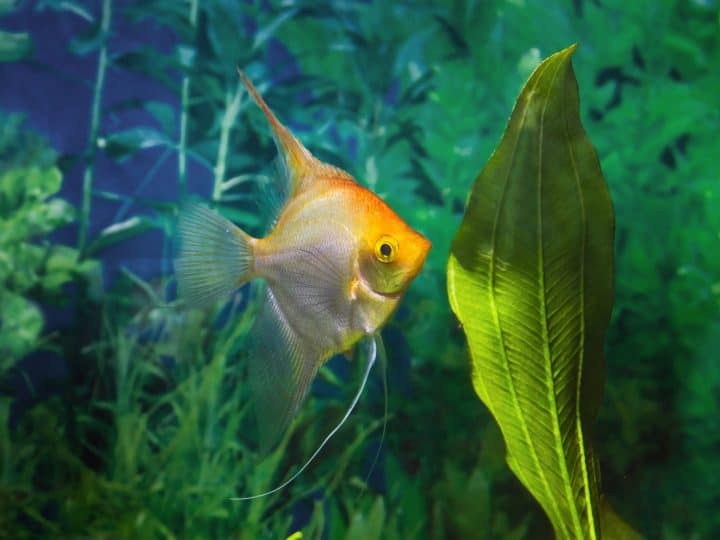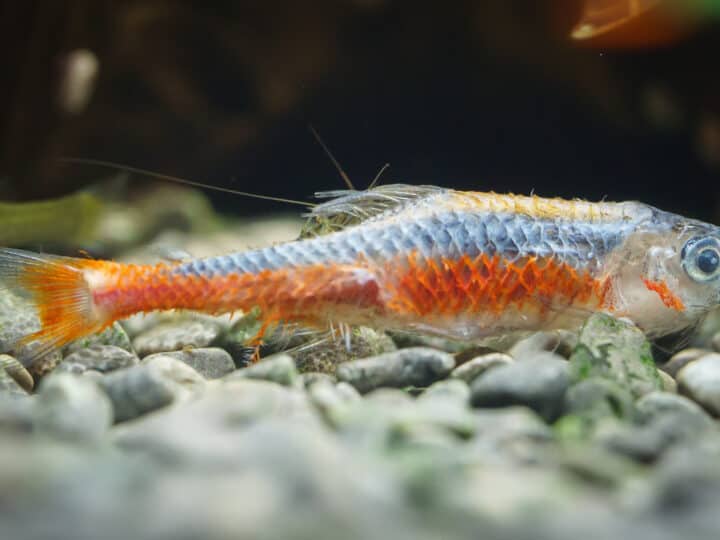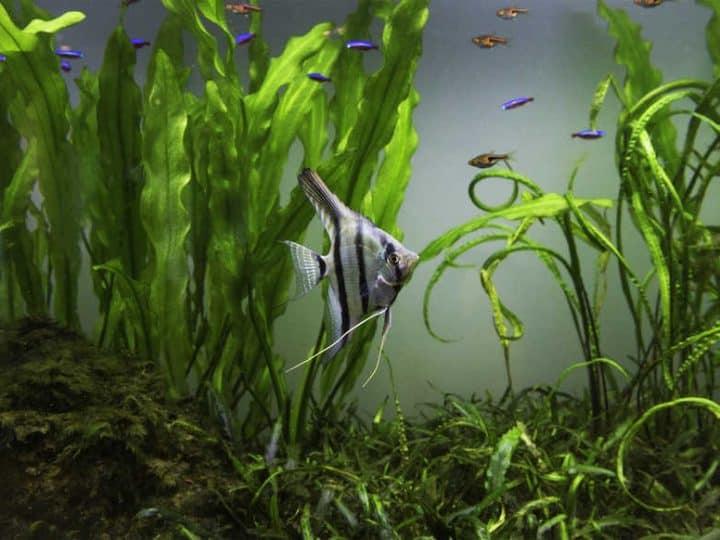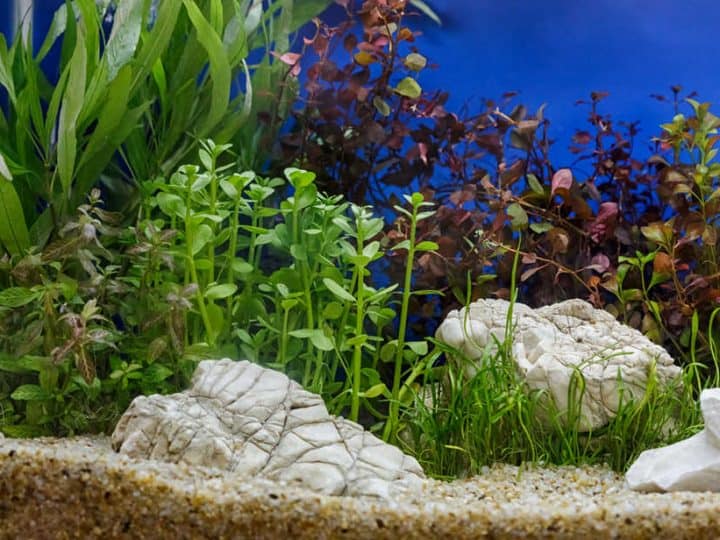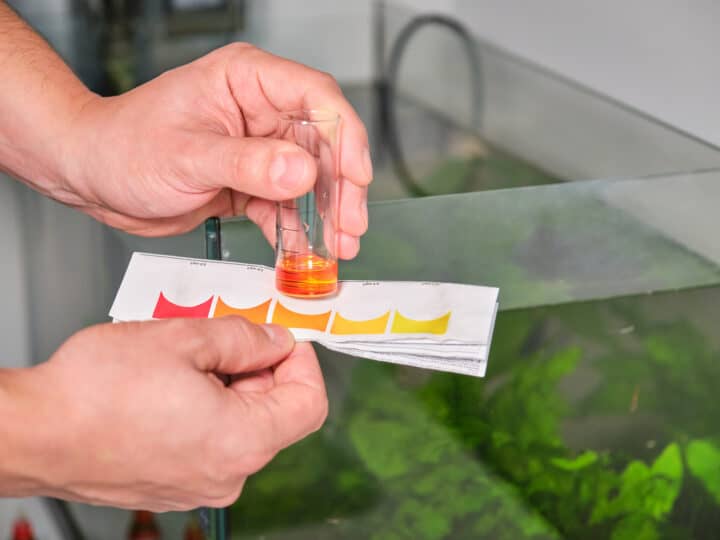This is probably the first thing that came to my mind when I got home with my first aquarium. And it also is the number one mistake that most beginner aquarium keepers make.
Quick Answer
Your aquarium is ready after it has fully “cycled”, which takes about a 4 – 6 weeks. Your aquarium should have an established colony of beneficial bacteria living in your filter and substrate that can break down toxic ammonia. Your fish produce ammonia which the bacteria convert to less toxic nitrate.
Now I understand that sounds super long, and you want to add fish as soon as possible because you can not wait. I felt the same. But it will be terrible for your fish if you add them too early, they might even die. There are ways by which you can speed up the process as well.
Prepare Your Aquarium for Fish
When you are first setting up your aquarium, you can already do a lot of things. When you get home from the store (or you ordered everything online) you can already put your aquarium in the desired place.
What you should do in order to start the cycle is prepare the tank up until the point where your substrate is in, your plants are in the tank, your heater is set up and most importantly, your filter is running.
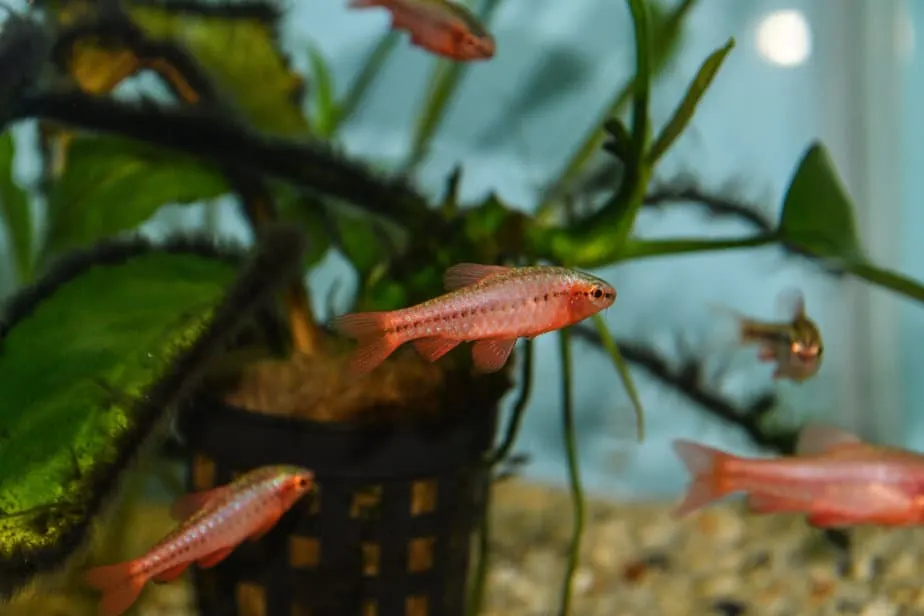
If your filter is running, water will flow through the filter medium that is inside the filter, which will also become the place where the most beneficial bacteria will settle. Eventually there will also be bacteria on the substrate and on ornaments.
What I like to do, and what other aquarium keepers also do, is add a little bit of food to your new tank. We do this because the beneficial bacteria that will start building up in your fish tank feed on ammonia, and in your brand new tank there is no source of it yet.
If you do add food as an ammonia source, make sure you do not add too much, just a tiny amount is sufficient. There are also people who add a fish from the start, but I do not endorse this method. Often this fish will end up either sick or dead from the ammonia that can not be broken down.
Speed Up the Cycling Process
There are multiple ways you can speed up the cycling process, but the most effective way is to start your tank with an already cycled filter.
This means that you should use a filter (or only filter media) that has been running for an extended period of time in another tank. This way, there will already be beneficial bacteria living in the filter that can start to break down ammonia right from the start.
If you are setting up your first fish tank, you will obviously not have another tank running from which you can use some cycled media. This means that you could ask your local fish store if they sell any pre-cycled media for you to start your tank with.
The second way is to use bottled bacteria, that can gap the period between the start and a cycled filter. A good example is Tetra SafeStart, which are live bacteria that you can add to your new aquarium. You can check the current price on amazon here.
Test to See If Your Tank is Ready
The 4 to 6 weeks that it takes for an aquarium to cycle is an estimate, as it is different for all fish tanks. It might have to do with the size, the water temperature and the oxygen levels. There is only one way to know for sure that our tank is ready: measure it.
There are 3 things that play a role here and that you want to measure before adding your first fish. Ammonia, nitrite and nitrate. The three components of the nitrogen cycle.
You can use a test kit to measure your water parameters, or you can ask your local fish store if they want to measure it for you. Some stores do this for free and others charge a small fee.
Ammonia is the most toxic of all, so if you measure it you do not want to have any ammonia in your tank. The closer to 1 part per million (ppm) the better, and 1 or 2 ppm is already to much.
The second substance, nitrite, is the middle product between ammonia and nitrate. If you have a properly functioning nitrogen cycle all ammonia that has been converted to nitrite will be directly converted to nitrate. Therefore, you also want 0 ppm nitrite.
Last but not least, you will want to measure nitrate. This luckily is way less toxic than ammonia and nitrite, so this one you do not have to worry about as much. If you have a good cycle you will have some nitrate, and if you have high nitrates (40 ppm or up) you should do a water change.
If you want to test the water parameters yourself you will need a test kit. There are test strips out there, but they give more of a quick checkup and are not that accurate. What you would ideally want is a liquid based test setup. I always recommed the API Master Test Kit which will have you covered for a long time. If you want you can check out the current price on Amazon here.
Looking for more information on aquarium plants?
In that case, make sure to check out our aquatic plants landing page. There you’ll find everything you need to make your plants THRIVE in your aquarium!
Your First Fish – Build Up Slow
If your aquarium is all set for its first fish, which means you have zero ammonia and zero nitrite, by all means go ahead. This is a joyful moment! There is one thing that you need to know though: do not go overboard.
Your beneficial bacteria colony has just started, it is in its infant stage. It is there, that is very true, but it is just a small army. Therefore, do not stock your aquarium to the maximum.
The best thing you can do is add just a couple of fish, maybe a hand full. That is, when you are starting a community fish tank. If you are planning to add bigger fish, maybe cichlids of some kind, don’t add 10 of them at once. Start with a couple and watch how they are doing.
If they are doing well, you can add more fish after a couple of weeks. Just take it slow.
Related Questions
What to look out for when adding fish to an old tank? When adding fish to an old tank, you have to be careful that your tank does not have the so called “old tank syndrome”. This means that the nitrate and phosphate concentrations are super high and the pH has been dropping over time. Always measure you water parameters beforehand.
What if my ammonia levels suddenly rise? If you measure your water parameters and the ammonia levels are high, this means that you have an ammonia spike. This is lethal for your fish so you should act immediately. If you have another established tank, move your fish there. Do a big water change and check if there is anything rotting in your tank (plants or fish).
What if I wait longer than 6 weeks to add my fish? This generally is no problem. This just means that the beneficial bacteria that are housed in your filter get more time to properly establish. Some people do throw in a little bit of food that will decay and act as an ammonia source to feed the bacteria.

